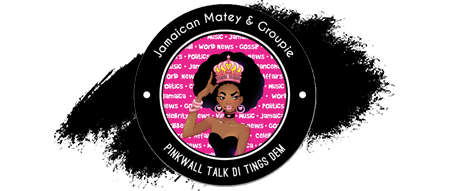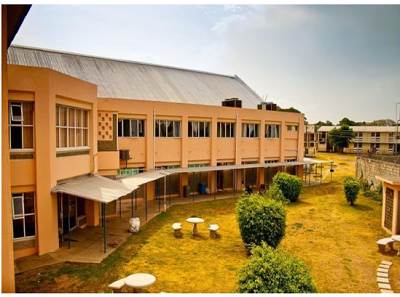The Spanish Town Hospital is located in the parish of St. Catherine, the fastest growing parish
in the island and continues to experience an increasing demand on its services as it serves rapidly
growing communities in St. Catherine such as Portmore, Eltham, Angels Estate and Ensom City.
Also, its close proximity to three major highways contributes to an increasing number of victims
of motor vehicle accidents accessing the hospital for Emergency Medical Care.
It is the largest Type B Hospital in the island and has statistics comparable to Kingston Public
Hospital, Cornwall Regional Hospital, the island’s only two type ‘A’ hospitals.
The service areas audited were the Neonatal Nursery, Accident and Emergency Department,
Intensive Care Unit and the Operating Theatre Suite.
NON-CONFORMANCES
Accident and Emergency Department
a) Hand-washing guidelines are not being adhered to. Blood is taken without gloves and
hands are not washed after removing gloves.
b) Cleaning materials are not labelled.
c) There is no documented cleaning schedule.
d) The cleaning methods do not conform to standards.
e) Job descriptions are to be prepared and given to all staff on recruitment.
f) Staff needs to be made familiar with the mass casualty plan and the plan should be tested
at least once per year.
g) Wheelchairs and stretchers are in short supply. Patients who are awaiting admission to
the wards stay on the chairs and stretchers for extended periods.
h) Additional wheel-chairs are needed in the department. A number of wheelchairs are
defective with no rubber on the wheels and no footrests.
i) Additional stretchers are needed in the department.
j) Sharps containers are inappropriate. Cardboard boxes and plastic bottles are used.
k) Patient bathrooms need to be upgraded. Seats and tank covers were missing in a few
places. The staff toilet in the records department did not flush.
l) Orientation guidelines need to be prepared for clinical staff.
m) No log books are being used. Sheets of paper are used for triaging and these are put in the
patient records. Therefore no record remains in the department.
n) A system is needed for the monitoring of the usage of drugs and supplies, in order to
prevent stock-outs.
13
o) Clinical practice guidelines for commonly seen conditions are necessary in order to
standardize the emergency care given.
Maternity/ Obstetrics Unit
a) Mothers are not assigned identification tags.
b) The delivery beds are not the appropriate beds.
c) Inappropriate Sharps containers are being used.
d) Staff does not wear identification badges.
e) Discharge summaries remain delayed in completion.
f) Orientation guidelines need to be prepared for the clinical staff
g) A number of items are in short supply or are absent viz.
– Sphygmomanometers and stethoscopes
– Thermometers Fleet enema
– Facilities for sitz baths
Neonatal Nursery
a) The containers with the cleaning agents are not labelled.
b) The cleaning methods do not conform to standards and schedules are not documented.
c) Makeshift sharps containers are being used. These present a risk to staff.
d) The store room has a number of non-functional pieces of equipment. These need to be
removed so that the spare beds for the nursery can be stored there instead of in a space on
the nursery ward.
e) Excess furniture in the clinical area hampers the proper cleaning of the floor.
f) Food and drugs are stored in the same refrigerator. This affects the cold –chain
management of the drugs. A refrigerator is needed to store the food and drink belonging
to staff.
g) Hand-towels are in short supply hence expensive gauze is being cut for hand drying. This
is “pennywise and pound foolish”.
h) On the day of the audit a Gram-negative organism outbreak was reported in the nursery
and there was said to be an absence of the appropriate antibiotics required for the
treatment of the babies.
14
Operating Theatre Suite (Main)
a) The tiles on the walls do not allow for adequate cleaning.
b) The Operating room is crowded with boxes, supplies and unused equipment. These all
hamper proper cleaning of the area.
c) The operating lights are dull in intensity.
d) There is “fungus” growing between the panes of glass in the window of the operating
room.
e) There is no documented cleaning schedule or documented evidence of monitoring of the
cleaning activities.
f) The storage areas are without doors and are scattered in different areas of the Operating
suite.
g) The delineation of the access areas needs to be made clear. Infection control is being
compromised.
h) The disposal of waste from the theatres requires an urgent review and re-organisation.
Bins with dirty linen etc are left in the sluice room overnight and removed in the morning
through the operating theatre.
i) The segregation of linen needs to be implemented. Soiled linen is put in the open bin with
dry dirty linen and the correct colour coded bags are necessary.
j) The expiry date is not affixed to the sterile packs. The date of sterilisation is used. This is
not the policy.
k) There is no logbook for supplies sent to the CSSD.
l) The opening of the unused chimney in the roof of the sterile room needs to be closed off.
m) The carbolic soap being used for hand scrubbing needs to be removed if the
antimicrobials are now to be used.
n) Material safety sheets for the disinfectants need to be made available to the staff.
o) Janitorial staff require training in the correct methods of cleaning and the materials and
concentrations of chemicals to be used.
p) The mops being used are not of the required standard and the number of mops and
buckets provided are inadequate.
q) The workload in the theatre is enough to warrant the assignment of a secretary/ records
officer.

